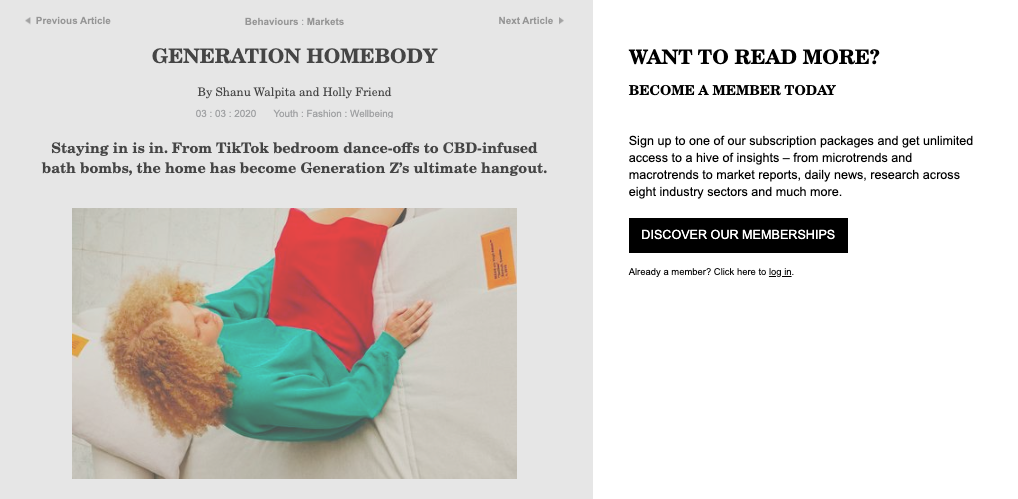Generation Homebody
Generation Z staying in. From TikTok bedroom dance-offs to CBD-infused bath bombs, the home has become Generation Z’s ultimate hangout.
JOMO (joy of missing out) has never been more appealing for Generation Z, who are leading the homebody renaissance, spending more time than ever at home.
Thanks to record levels of convenience – 24-hour food delivery, same-day shipping, Netflix, flexible offices – we're seeing Generation Z staying in and the idea of staying home is losing its connotations of laziness and slacker culture. Bedrooms have become a welcome refuge from hustle culture, burnout, political flux and the climate crisis, with a swathe of relatable user-generated content (UGC) on platforms such as TikTok changing the homebody narrative from enforced loneliness to welcome isolation.
With self-care being the ultimate currency of cool, Generation Z are yearning for cosiness, and even using staying at home as a form of personal branding – a way to assert control over their social anxiety, or as a means to rebuff the cultural pressures of going out and being young.
21 March 2020
Author: Shanu Walpita and Holly Friend
Image: MARKERAD collection by Ikea and Virgil Abloh
Share
𝕏
Bedroom broadcasters
Bedrooms have become the cultural epicentre of the homebody economy. Self-care, hygge, borecore and newer terms like ‘domestic cozy’ are all being used as markers to define people who, even when they’re not at home, want to feel like they are.
At the same time, the stigma around young people living at home into their 20s has vastly decreased. Over the past two decades, there has been a 46% increase in 20–34-year-olds living with their parents in the UK (source: Office for National Statistics). This has led to a new movement of bedroom broadcasters who are creating and consuming content in a drastically different fashion from Millennials.
'People want to celebrate the fact that they are taking a break, and taking time to take care of themselves'
Want to read more?
Become a member today!
Sign up to one of our subscribtion packages and get unlimited access to a hive of insights - from microtrends and macro trends to market reports, daily news, research across eight industry sectors and much more.
Discover our memberships
Already a member? Click here to login

